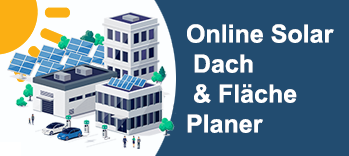Regional economic assessments in a global comparison: USA, EU, Germany, Asia and China | Xpert Analysis
Xpert pre-release
Language selection 📢
Published on: November 23, 2025 / Updated on: November 23, 2025 – Author: Konrad Wolfenstein

Regional economic assessments in a global comparison: USA, EU, Germany, Asia and China | Xpert Analysis – Image: Xpert.Digital
Only 0.2% growth: Germany slips to the bottom of the G20 – a bitter comparison
210 billion euros in capacity destroyed: The silent hemorrhage of German industry
Current economic data paints a picture of a world increasingly moving at two speeds. On the one hand, there are the dynamic markets of Asia, which, despite geopolitical tensions and trade conflicts, generate around 60 percent of global growth. On the other hand, we see established industrialized nations searching for direction. The USA, in particular, presents itself as a land of extremes: While business leaders are optimistic about the future, consumer confidence is plummeting to historic lows in the face of high living costs.
The situation in Europe is even more dramatic, particularly for Germany. The former engine of the EU is in danger of becoming the permanent laggard among the G20 nations. With projected stagnation, declining investment, and an unprecedented slump in economic sentiment, the Federal Republic faces a fundamental structural crisis that could jeopardize prosperity for years to come.
This comprehensive comparison analyzes the key economic factors for the US, the EU, Germany, Asia, and China. It examines how protectionism, inflation, and technological change are reshaping power dynamics and which regions will emerge stronger from 2025.
Surprising turnaround: For the first time, more people worldwide view China more positively than the USA.
The year 2025 marks a turning point in the global economic order: While Asia is forging ahead as the undisputed engine of growth, the West is struggling with profound structural crises and a divided perception of reality.
Current economic data paints a picture of a world increasingly moving at two speeds. On the one hand, there are the dynamic markets of Asia, which, despite geopolitical tensions and trade conflicts, generate around 60 percent of global growth. On the other hand, we see established industrialized nations searching for direction. The USA, in particular, presents itself as a land of extremes: While business leaders are optimistic about the future, consumer confidence is plummeting to historic lows in the face of high living costs.
The situation in Europe is even more dramatic, particularly for Germany. The former engine of the EU is in danger of becoming the permanent laggard among the G20 nations. With projected stagnation, declining investment, and an unprecedented slump in economic sentiment, the Federal Republic faces a fundamental structural crisis that could jeopardize prosperity for years to come.
This comprehensive comparison analyzes the key economic factors for the US, the EU, Germany, Asia, and China. It examines how protectionism, inflation, and technological change are reshaping power dynamics and which regions will emerge stronger from 2025.
USA: Cautious optimism amid growing uncertainty
The United States presents a divided picture of its economic outlook in November 2025. While US business leaders remain generally optimistic for 2025 – 65% express a positive view of the national economy, a significant increase compared to the previous year – a completely different picture emerges at the consumer level.
Assessment of one's own economic situation
The US economy is projected to grow by 1.8-1.9% in 2025, following 2.8% in 2024. The Federal Reserve has already lowered interest rates and is aiming for a neutral key interest rate of 3.25%. Despite these measures, inflation remains above target at 2.7%, which is straining household purchasing power.
Consumer confidence has plummeted: The Michigan Consumer Sentiment Index fell to 51.0 points in November – near the historic low of 50 from June 2022. The government shutdown, which lasted for over a month, has further exacerbated uncertainty. Particularly worrying: 61% of Americans believe the cost of living is heading in the wrong direction, and 59% believe this is also true for inflation.
CEOs are significantly more optimistic: 87% of German companies in the US expect stable or improved business performance over the next twelve months. 70% plan to maintain or increase investments, and 81% expect stable or growing employment. This discrepancy between business optimism and consumer pessimism is remarkable.
Perception of the global economic situation
The American view of the global economy has deteriorated significantly. Only 29% of US business leaders are optimistic about global conditions, compared to 65% for the domestic economy – a gap of 36 percentage points. The Trump administration's tariff policy is facing increasing criticism: 57% of Americans oppose the flat 10% tariffs.
Interestingly, for the first time worldwide, more people believe that China has a more positive influence on the world than the USA (49% vs. 46%). The perception of the USA as a positive global force has fallen from 77% before the Trump election to 63%.
European Union: Moderate recovery despite structural challenges
Assessment of one's own economic situation
The EU economy exceeded expectations in the first three quarters of 2025, mainly due to exports being brought forward in anticipation of tariff increases. Real GDP growth is forecast at 1.4% for both 2025 and 2026, with a slight increase to 1.5% in 2027.
Business sentiment is showing signs of improvement: The Economic Sentiment Indicator (ESI) rose in October 2025 in both the EU (+1.0 point to 96.7) and the Eurozone (+1.2 points to 96.8). However, only 26% of companies rate their business situation as “good”, while 25% describe it as “poor”.
Inflation is returning to its target level: In the eurozone, it will fall to 2.1% in 2025 and fluctuate around 2% in the following years. Across the entire EU, it is expected to be 2.5% in 2025 and decline to 2.2% by 2027. The unemployment rate will remain stable at 5.9%.
Investment remains a weak point: Growth of only 0.6% is expected for 2025, a significant downward revision of 0.8 percentage points. Ongoing uncertainty regarding trade policy and geopolitical tensions is dampening investment activity.
Perception of the global economic situation
European entrepreneurs are more cautious about the global economy than about their own region. 87% of European CEOs plan mergers or acquisitions in the next one to two years – a sign that they need to actively seek growth opportunities instead of waiting for a general upswing.
The EU recognizes its increasing vulnerability to US trade policy and Chinese competition. Three out of four companies report moderate to significant negative impacts of the tariffs on their business. At the same time, China is perceived as a growing threat to European export markets, particularly through cheaper imports.
🎯🎯🎯 Benefit from Xpert.Digital's extensive, five-fold expertise in a comprehensive service package | BD, R&D, XR, PR & Digital Visibility Optimization

Benefit from Xpert.Digital's extensive, fivefold expertise in a comprehensive service package | R&D, XR, PR & Digital Visibility Optimization - Image: Xpert.Digital
Xpert.Digital has in-depth knowledge of various industries. This allows us to develop tailor-made strategies that are tailored precisely to the requirements and challenges of your specific market segment. By continually analyzing market trends and following industry developments, we can act with foresight and offer innovative solutions. Through the combination of experience and knowledge, we generate added value and give our customers a decisive competitive advantage.
More about it here:
Global Economic Fronts 2025 – From German Stagnation to Asian Dynamism
Germany: Economic stagnation and structural crisis
Assessment of one's own economic situation
Germany is facing an unprecedented structural crisis. After two years of recession (-0.9% in 2023, -0.5% in 2024), only marginal growth of 0.1-0.2% is expected for 2025. The EU Commission forecasts near-total stagnation in 2025 with 0.2% growth, followed by 1.2% in 2026.
Business expectations are bleak: Only about one in eight companies anticipates a "rather favorable" outlook, while one in three fears a "rather unfavorable" development. 31 out of 49 business associations describe the current situation as worse than a year ago. For the first time, more companies (28%) plan to cut jobs than to create them (19%).
The problems are diverse and structural:
- Industrial crisis: The situation is alarming, with a decline in production capacity of €210 billion since 2020. Producer prices for industrial products have risen by 40% since 2020, while export prices have increased by only 20% – a massive competitive disadvantage.
- Investment crisis: Four out of ten companies plan to invest less in 2025. Construction investments fell by almost 4% in 2024 and are expected to decline by a further 2% in 2025.
- High costs: Energy, labor and excessive bureaucracy are hindering international competitiveness.
- Political uncertainty: The government vacuum and the upcoming elections are increasing reluctance to invest.
The unemployment rate is expected to rise to 6.3% in 2025, with nearly 3 million people unemployed. Private consumption will remain subdued despite increased purchasing power, as households are acting cautiously.
Perception of the global economic situation
German companies face massive external risks. US tariff policy could reduce Germany's GDP by 0.6% in a baseline scenario and by up to 1.2% in a negative scenario. As an export-oriented economy, Germany is particularly affected by the global economic downturn.
Export expectations for 2025 are at historic lows, particularly in the automotive and metal industries. Germany's projected economic growth for 2025 places it in the lower middle of the EU rankings and it ranks last among the G20 nations internationally.
Asia: Engine of global growth despite trade tensions
Assessment of one's own economic situation
Asia will remain the world's most dynamic economic region in 2025. The region is projected to grow by 4.5% and contribute approximately 60% of global growth. Asia's share of the global economy will increase from 36.1% (2024) to 36.4% (2025), and even from 48.1% to 48.6% when adjusted for purchasing power parity.
The performance of individual countries demonstrates resilience:
- India: 6.6% growth in 2025, 6.2% in 2026 – the strongest among the major emerging economies
- Vietnam: 6.6% growth (highest in the region), driven by strong industrial activity
- Singapore: Revised forecast to “around 4.0%” for 2025, after a surprisingly strong Q3 with 4.2% growth
- Indonesia: 4.8-5.1% growth
- Philippines: 5.3-6.0% growth
Resilience is supported by several factors:
- Exports brought forward before tariff increases
- AI-driven investments, especially in South Korea and Japan
- Reorientation of supply chains within the region
- Monetary policy easing in many countries
However, weaknesses are also apparent: Business and consumer confidence have not recovered to pre-COVID levels. Retail sales are growing, but consumer confidence remains subdued.
Perception of the global economic situation
Asian economies are increasingly finding themselves at the center of global trade conflicts. The IMF warned that despite upward revisions, the outlook remains vulnerable, as the tariff situation could continue to evolve and worsen.
ASEAN countries face a balancing act between US market access and Chinese investment flows. Trade tensions have lowered the growth forecast for ASEAN-5 from 4.6% to 4.1% for 2025. Trade-dependent economies such as Vietnam and Cambodia are particularly affected.
Despite the challenges, Asia is taking advantage of the situation: Intra-Asian trade is growing strongly as production and procurement are shifted within the region. This strengthens regional integration and makes the region less dependent on Western markets.
China: Slowdown in structural transformation
Assessment of one's own economic situation
China's economy showed mixed signals in November 2025, continuing its slowdown. GDP growth in Q3 2025 was 4.8% (year-on-year), the weakest pace in a year. For the full year 2025, growth of 4.8-5.0% is expected, and the official target of "around 5%" remains achievable.
The economic indicators for October reveal increasing weakness:
- Industrial production: Growth of only 4.9% (down from 6.5% in September)
- Retail sales: 2.9% growth, lowest level in months
- Investments in fixed assets: -12.2% (fifth consecutive monthly decline)
- Exports: -1.1% (first decline in months)
Structural challenges continue to pose a burden:
- Real estate crisis: Investments in real estate fell by 13.9% in the first three quarters compared to the previous year. Housing prices are declining nationwide, by 0.8% in major cities and by 3.4% in medium-sized cities. The sector now accounts for approximately 15% of GDP (down from 30% in 2015).
- Weak consumer confidence: The Consumer Confidence Index remains near historic lows. Households are saving at historically high levels.
- Private investment weakness: Companies remain hesitant due to low profit margins and increasing competitive pressure.
However, positive elements offer hope:
- High-tech manufacturing: Strong performance in advanced sectors
- Service sector: Resilient growth, strongest expansion of the year in service-oriented spending
- Fiscal policy: Approximately 1.6% of GDP in fiscal support in 2025, further incentives announced.
Goldman Sachs revised its forecasts upwards: 5.0% for 2025, 4.8% for 2026, and 4.7% for 2027, significantly above consensus estimates. This is based on expected 5-6% annual export growth driven by gains in global market share for Chinese goods.
Perception of the global economic situation
China faces an increasingly hostile global trade environment. US tariffs are significantly impacting exports, with the World Bank warning of slowing export growth by 2026. The manufacturing PMI fell to 49.0 in October, below the expansion threshold.
In response, China is intensifying regional trade: Exchanges between ASEAN and China have increased significantly. China is increasingly shifting exports to markets other than the US to offset losses.
The Chinese leadership is strategically focusing on structural transformation rather than short-term stimulus. The 15th Five-Year Plan (2026-2030) focuses on:
- Modernization of traditional industries (metals, chemicals, textiles)
- Growth in new energies, electric vehicles and semiconductors
- Technological and scientific independence
This strategy reflects a shift away from debt-driven expansion and an acceptance of slower, but higher-quality growth. China remains cautiously optimistic that it can maintain relatively stable growth through domestic stimulus despite external shocks.
Comparative overall analysis
Regional perceptions of the economic situation at the end of 2025 reveal fundamental differences in expectations, challenges, and strategic priorities:
- Growth dynamics: Asia (4.5%) and China (4.8-5.0%) continue to dominate global growth, while advanced economies lag significantly behind: USA (1.8%), EU (1.4%), Germany (0.2%).
- Main concerns: In the US, inflation and the cost of living dominate consumer concerns, while businesses remain more optimistic. In Europe, and particularly in Germany, structural competitiveness, high energy costs, and weak investment are the main concerns. Asia is navigating trade tensions through regional integration, while China is undergoing a deliberate structural transformation.
- Trade policy: US tariff policy is perceived globally as a destabilizing factor. This hits export-oriented economies like Germany and China particularly hard, while ASEAN countries have to balance US market access with Chinese investment.
- Business sentiment: The biggest discrepancy between business and consumer confidence is in the US. Germany is suffering from historically low business confidence. China is struggling with persistently weak consumer confidence despite political support. Asia is showing the greatest resilience and adaptability.
- Strategic orientations: The USA focuses on AI investments and protectionism, Europe desperately seeks growth impulses through deals and reforms, Germany urgently needs structural overhaul, Asia diversifies trade relations and strengthens regional integration, China is consciously undergoing a transformation to high-tech and higher-value production.
The global economy in 2025 is characterized by a growing divergence between dynamic Asian economies and stagnant Western industrialized nations, exacerbated by increasing protectionism and geopolitical tensions.
Your global marketing and business development partner
☑️ Our business language is English or German
☑️ NEW: Correspondence in your national language!
I would be happy to serve you and my team as a personal advisor.
You can contact me by filling out the contact form or simply call me on +49 89 89 674 804 (Munich) . My email address is: wolfenstein ∂ xpert.digital
I'm looking forward to our joint project.
☑️ SME support in strategy, consulting, planning and implementation
☑️ Creation or realignment of the digital strategy and digitalization
☑️ Expansion and optimization of international sales processes
☑️ Global & Digital B2B trading platforms
☑️ Pioneer Business Development / Marketing / PR / Trade Fairs
Our global industry and economic expertise in business development, sales and marketing

Our global industry and business expertise in business development, sales and marketing - Image: Xpert.Digital
Industry focus: B2B, digitalization (from AI to XR), mechanical engineering, logistics, renewable energies and industry
More about it here:
A topic hub with insights and expertise:
- Knowledge platform on the global and regional economy, innovation and industry-specific trends
- Collection of analyses, impulses and background information from our focus areas
- A place for expertise and information on current developments in business and technology
- Topic hub for companies that want to learn about markets, digitalization and industry innovations























